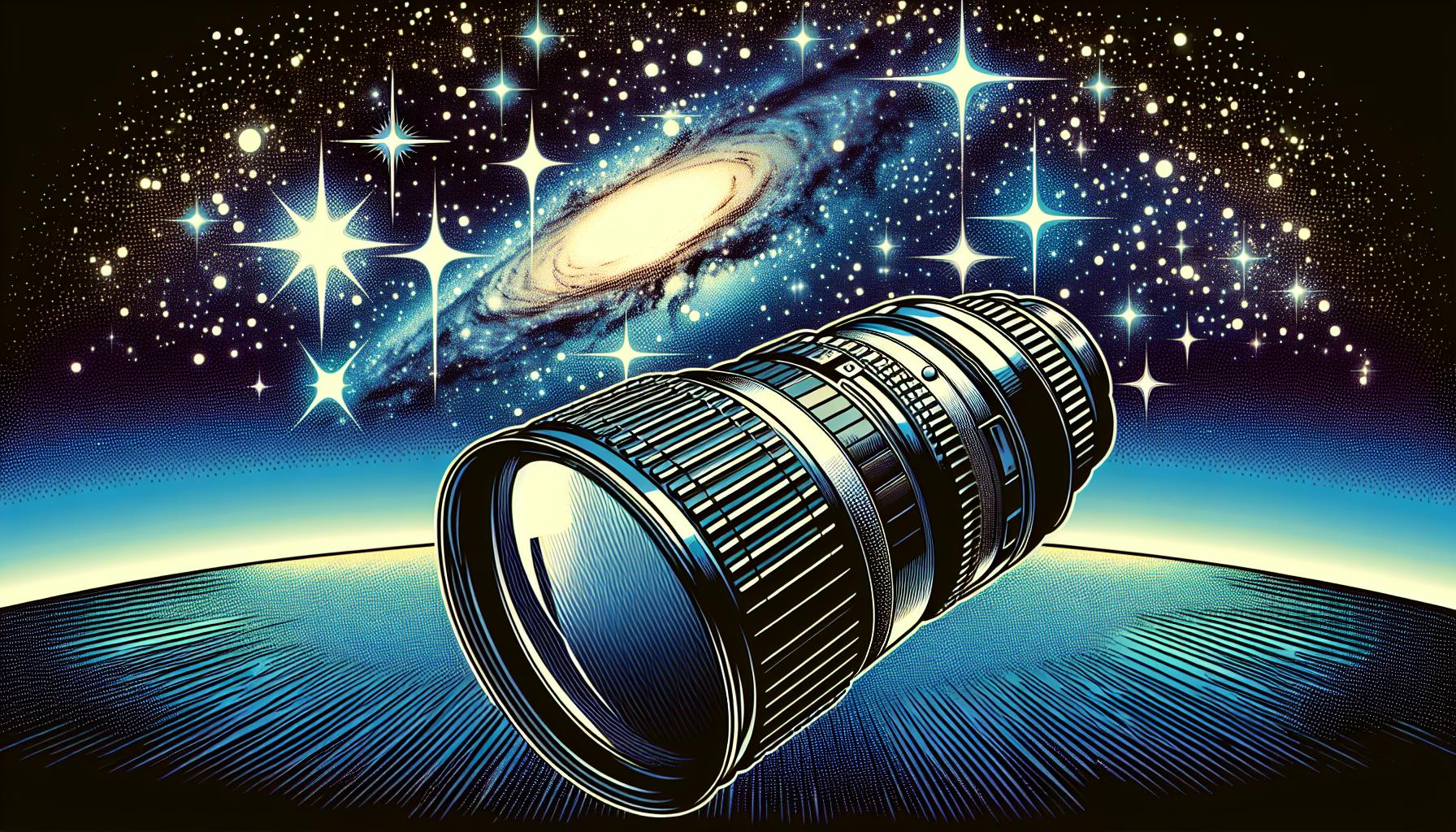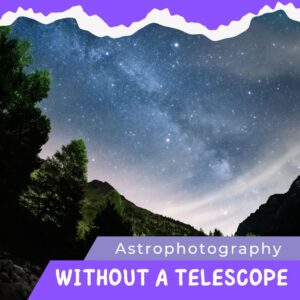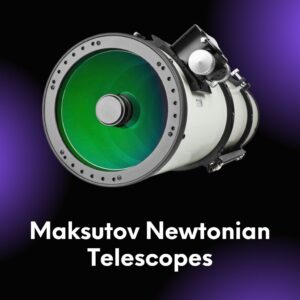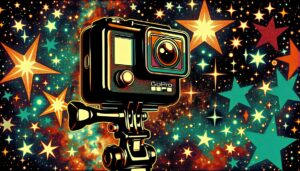This site contains affiliate links to products. I may receive a commission for purchases made through these links.
The kind of lens you select can substantially influence the quality of your astrophotography. This makes choosing the right lens crucial. After all, it’s the lens that captures light from celestial bodies and focuses it onto your camera’s sensor.
Some might ask, “Why can’t I use my regular lens for astrophotography?” Well, you can’t use just any lens for astrophotography because of the lens attributes essential for astrophotography. The best lens for you depends on what you’re aiming to photograph. Whether it’s wide-angle shots of the Milky Way or detailed images of distant galaxies, there’s a lens out there for you.
Let’s dive in and find your perfect fit.
Factors to consider when choosing an astrophotography lens
Astrophotography isn’t just about skills and techniques. It’s also about the equipment you use. When getting yourself equipped for this unique art, choosing the right lens is a crucial step.
- Focal Length: As stated before, short focal lengths will give a wide-field view of the sky, ideal for capturing celestial events, star clusters, or wide swathes of the Milky Way. Long focal lengths, on the other hand, are for narrowing down your field of view to observe specific objects or details intently.
- Aperture: Astrophotography requires lenses capable of gathering as much light as possible. Hence, you’ll need a lens with a wide maximum aperture – ‘fast’ lenses. The lower the f-number, the larger the aperture, the more light your lens can gather in a given time frame.
- Lens Coma: Coma, or comatic aberration, refers to a common lens defect that results in off-axis point sources such as stars appearing distorted. Good astrophotography lenses minimize this defect.
- Crop Factor: Cameras with a cropped sensor usually have a smaller physical sensor size, affecting how much of the scene you can capture. Therefore, consider your camera’s crop factor as it will impact the effective focal length of your lens.
- Weight of the Lens. This is often overlooked, yet it is important to consider, especially if you plan to travel with your equipment. A lighter lens can make a big difference after a whole night of capturing the captivating night sky.
| Factor | Importance for Astrophotography |
|---|---|
| Focal Length | Determines the field view for capturing celestial events |
| Aperture | Determines the amount of light that can be gathered |
| Lens Coma | Affects the quality of the captured images |
| Crop Factor | Impacts the effective focal length of your lens |
| Weight of Lens | Important for travel and long-duration use |
Different types of astrophotography lenses
Diving deeper into the world of astrophotography lenses, it’s important to understand the available different types. These lenses are designed to cater to various shooting requirements and style preferences, making the choice highly personal and dependent on one’s specific astrophotography goals.
Standard lenses
Also known as normal lenses, standard lenses have a focal length roughly equal to the diagonal of the film format or image sensor. They’re great for capturing a field of view that approximates the human eye’s perception, making them versatile for various types of photography, including astrophotography. An example of a standard lens is a 50mm for a full-frame camera.
Wide-angle lenses
One key advantage of wide-angle lenses is their ability to capture vast expanses of the celestial dome. This comes in handy when taking shots of constellations, the Milky Way, or large-scale meteor showers. It’s the ideal lens when the goal is to incorporate beautiful landscapes into your starry sky shots.
You might be asking, “What’s the best focal length for a wide-angle lens for astrophotography?”
Typically, astrophotographers prefer wide-angle lenses in the 14-24mm range. Lenses within this range can capture large amounts of sky and landscape without causing the stars to become small, indistinct points.
Remember, the wider the lens, the more sky you’ll capture, but this could lead to potential distortion at the edges of your image. Just like with any photography gear, it’s essential to practice and understand how your equipment works to achieve the stunning visuals you’re aiming for.
Telephoto lenses
Moving on from the vast capabilities of wide-angle lenses, telephoto lenses offer a different perspective. They might not offer the sweeping landscapes of their wide-angle counterparts, but these lenses provide an in-depth exploration of the night’s sky, perfect for detailed astrophotography.
First off, let’s dive into what makes telephoto lenses a must-have in the toolkit of any astrophotographer. Telephoto lenses allow us to focus on smaller areas of the sky, enabling us to capture detailed shots of distant celestial bodies. From capturing the intricate features of the moon to immortalizing the swirls of galaxies, telephoto lenses provide the power to zoom in on the depths of space.
There is a myriad of telephoto lenses available in the market, each with unique features and properties. Some of the preferred telephoto lenses among astrophotographers are the Canon EF 70-200mm f/2.8L IS II USM and the Nikon AF-S FX NIKKOR 200-500mm f/5.6E ED.
One of the key properties to consider while choosing a telephoto lens is its focal length. It relates directly to the amount of ‘zoom’ a lens provides.
Fisheye lenses
Fisheye Lenses which are a type of ultra-wide-angle lenses, create a wide panoramic or hemispherical image. Though the resulting images can be distorted, it’s a feature that some astrophotographers use creatively.
Zoom lenses
Lastly, we have zoom lenses, which are essentially a combination of various lenses in one. These are convenient and versatile, offering a range of focal lengths within a single lens. However, their optical quality might not measure up to prime lenses, especially in low light conditions typical in astrophotography.
Conclusion
So, we’ve seen how telephoto lenses can open up a new world of astrophotography for us. They’re the key to capturing the far-off wonders of the cosmos, with lenses like the Canon EF 70-200mm f/2.8L IS II USM and the Nikon AF-S FX NIKKOR 200-500mm f/5.6E ED leading the pack.
Remember, the focal length of your lens will directly impact the detail in your shots. But don’t forget, with great power comes great responsibility. Higher-powered lenses can be weighty and may require extra gear. But for those willing to take on the challenge, the night sky’s the limit. Now it’s your turn to take the leap and start your journey in the fascinating world of astrophotography.
Don’t forget to subscribe to our newsletter where you’ll find the latest cosmic discoveries, expert stargazing tips, and exclusive subscriber deals. Embark on your cosmic journey if you haven’t already!
You may also like:




